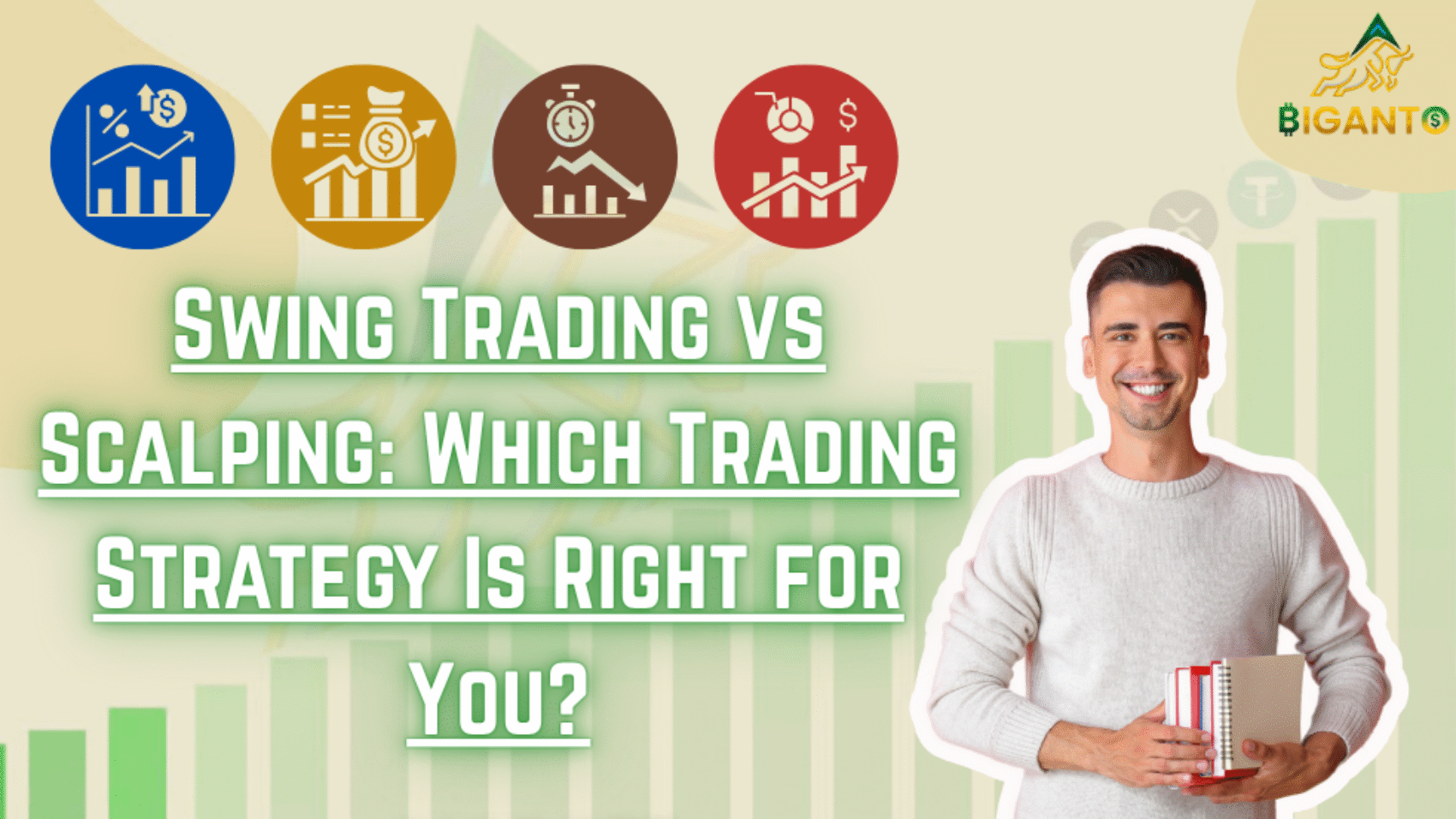Swing trading and scalping are two popular trading strategies used by traders to profit from market fluctuations. While both strategies aim to capitalize on price movements, they differ significantly in terms of approach, risk, and time commitment.
Swing Trading
Swing trading involves holding positions for a shorter period than investing, but longer than day trading. Swing traders aim to capture medium-term price movements, typically holding positions for several days or weeks.
How it Works
Swing traders typically rely on technical analysis, chart patterns, and indicators to identify potential entry and exit points. The goal is to take advantage of price swings—buying low and selling high or selling high and buying back lower during a market trend. Swing traders often look for stocks or currencies with good volatility and momentum, but they also consider broader market trends and economic events that might influence price movements.
Pros of Swing Trading:
1. Less time commitment: Swing trading requires less time and attention than day trading or scalping.
2. Lower transaction costs: Swing traders make fewer trades, resulting in lower transaction costs.
3. More flexibility: Swing trading allows for more flexibility in terms of entry and exit points.
Cons of Swing Trading:
1. Higher risk: Swing trading involves holding positions overnight, exposing traders to overnight risks.
2. Market volatility: Swing traders are more susceptible to market volatility and unexpected events.
Scalping
Scalping involves making multiple trades in a short period, typically within minutes or seconds. Scalpers aim to profit from small price movements, often using technical analysis and chart patterns to identify trading opportunities.
How it Works
Scalpers use technical analysis and indicators to identify short-term opportunities in the market. They often trade liquid assets such as stocks, currencies, or commodities, and execute numerous trades throughout the day. The goal is to profit from small price changes, typically entering and exiting positions quickly.
Scalpers generally trade on lower timeframes (e.g., 1-minute or 5-minute charts) and look for opportunities where they can enter and exit with minimal risk. They might rely on tight stop-loss orders to limit losses and protect profits.
Pros of Scalping:
1. Higher potential returns: Scalping offers the potential for higher returns, as traders can capitalize on multiple small price movements.
2. Lower overnight risk: Scalpers typically close their positions before the market closes, reducing overnight risk.
3. More control: Scalping allows traders to have more control over their trades, as they can quickly adjust to changing market conditions.
Cons of Scalping:
1. Higher transaction costs: Scalping involves making multiple trades, resulting in higher transaction costs.
2. More time commitment: Scalping requires constant monitoring of the markets and quick decision-making.
3. Higher stress levels: Scalping can be stressful, as traders must react quickly to changing market conditions.
Which Strategy is Right for You?
1. Time Commitment
- Swing Trading: Requires less time commitment compared to scalping. You only need to check your trades a few times a day and monitor the market during key periods. It’s ideal for people with other commitments, such as a full-time job or school.
- Scalping: Requires constant attention to the markets throughout the day. It’s best suited for people who can dedicate significant time to trading and are comfortable with quick decision-making.
2. Market Conditions
- Swing Trading: This strategy works well in trending markets where you can capture larger price movements. Swing traders tend to benefit more in volatile conditions with strong upward or downward trends.
- Scalping: Scalping is more suited for stable markets with high liquidity. It works best when markets are moving steadily, even if just in small increments.
3. Risk Tolerance
- Swing Trading: While swing trading involves exposure to market risk over days or weeks, it allows you to manage risk more effectively. The slower pace gives you time to analyze market conditions and react accordingly.
- Scalping: Scalpers often work with tight stop-losses to manage risk, but the fast-paced nature of the strategy can lead to higher stress levels and quicker losses if trades go wrong.
Conclusion: Which Strategy is Right for You?
Choosing between swing trading and scalping ultimately depends on your personality, time availability, risk tolerance, and trading goals. Here’s a quick guide to help you decide:
- Swing Trading is ideal for individuals who:
- Prefer a more relaxed trading style.
- Have the patience to hold positions for several days or weeks.
- Want to take advantage of larger price moves over time.
- Can dedicate a few hours a day to market analysis.
- Scalping is perfect for those who:
- Thrive in high-pressure, fast-paced environments.
- Can dedicate hours to market observation and quick decision-making.
- Are comfortable with making numerous trades per day to capture small profits.
- Have the ability to manage stress and stay calm under pressure.
Both strategies have the potential for success, but your choice should align with your lifestyle, goals, and risk appetite. Whether you’re drawn to the slower, methodical approach of swing trading or the fast, action-packed world of scalping, the most important factor is that you find a strategy that works for you. Happy trading!

